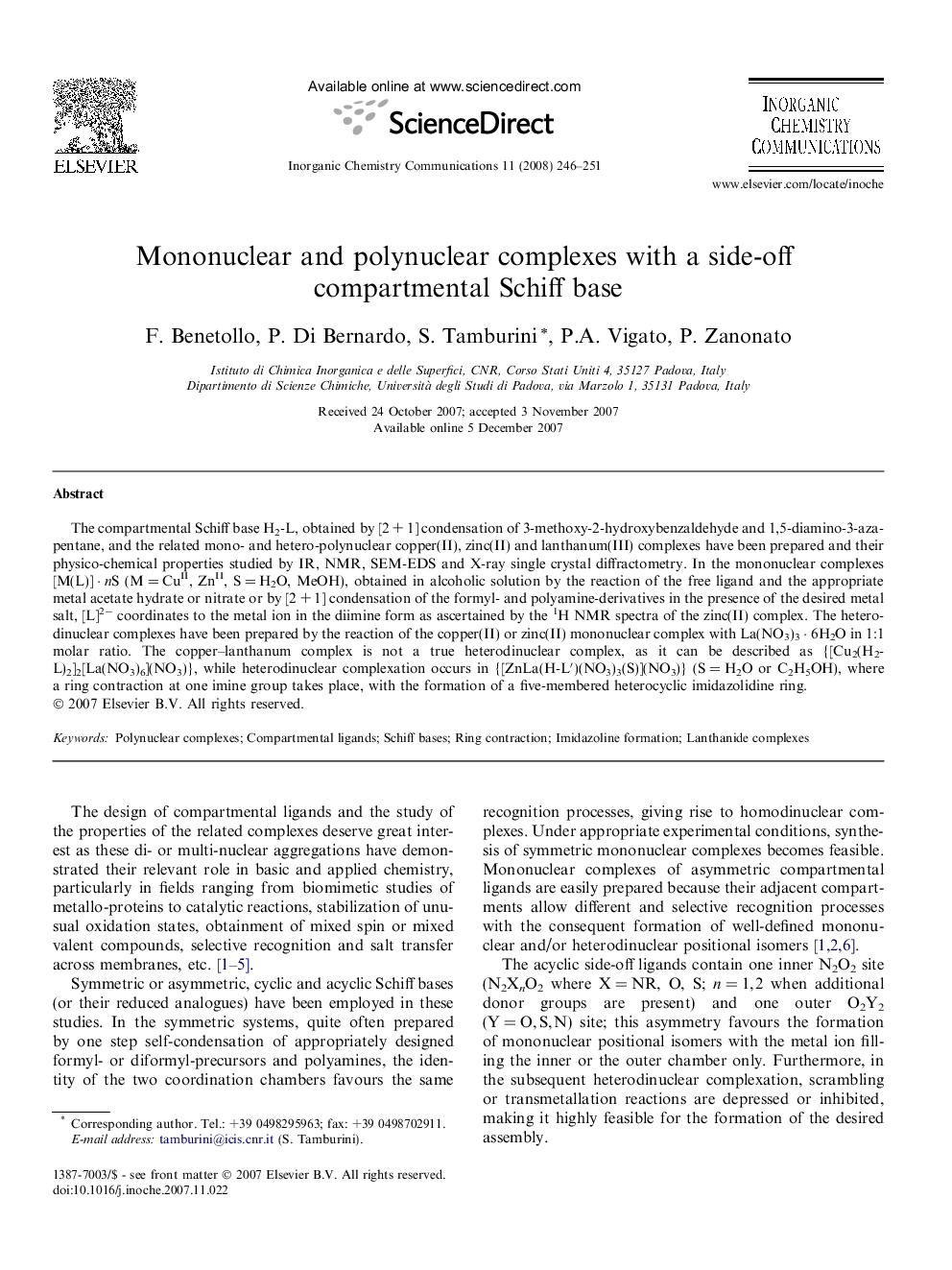| Article ID | Journal | Published Year | Pages | File Type |
|---|---|---|---|---|
| 1304672 | Inorganic Chemistry Communications | 2008 | 6 Pages |
The compartmental Schiff base H2-L, obtained by [2 + 1] condensation of 3-methoxy-2-hydroxybenzaldehyde and 1,5-diamino-3-azapentane, and the related mono- and hetero-polynuclear copper(II), zinc(II) and lanthanum(III) complexes have been prepared and their physico-chemical properties studied by IR, NMR, SEM-EDS and X-ray single crystal diffractometry. In the mononuclear complexes [M(L)] · nS (M = CuII, ZnII, S = H2O, MeOH), obtained in alcoholic solution by the reaction of the free ligand and the appropriate metal acetate hydrate or nitrate or by [2 + 1] condensation of the formyl- and polyamine-derivatives in the presence of the desired metal salt, [L]2− coordinates to the metal ion in the diimine form as ascertained by the 1H NMR spectra of the zinc(II) complex. The heterodinuclear complexes have been prepared by the reaction of the copper(II) or zinc(II) mononuclear complex with La(NO3)3 · 6H2O in 1:1 molar ratio. The copper–lanthanum complex is not a true heterodinuclear complex, as it can be described as {[Cu2(H2-L)2]2[La(NO3)6](NO3)}, while heterodinuclear complexation occurs in {[ZnLa(H-L′)(NO3)3(S)](NO3)} (S = H2O or C2H5OH), where a ring contraction at one imine group takes place, with the formation of a five-membered heterocyclic imidazolidine ring.
Graphical abstractd,f-Heteronuclear complexes with an acyclic Schiff bases with a ring contraction at one imine group takes place.Figure optionsDownload full-size imageDownload as PowerPoint slide
